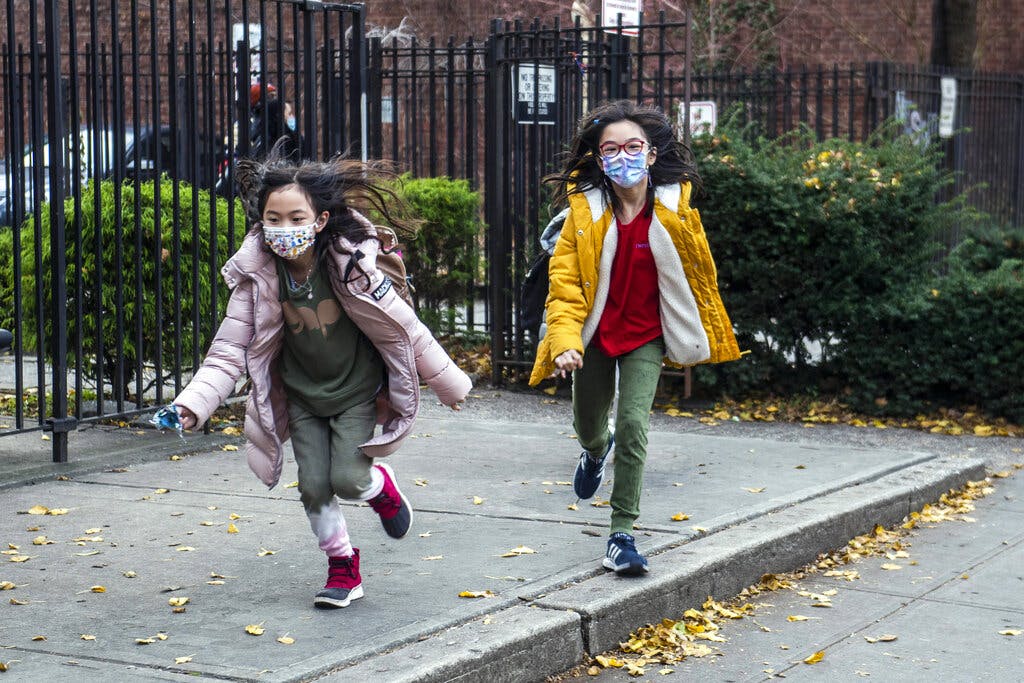NYC Schools Are Emptying Out and Homeschool Classrooms Are Filling Up, as Covid Exposes Public Schools’ Flaws
In the wake of the Covid pandemic, parents are thinking differently about how they want their children to learn.

More and more children are being pulled out of New York state’s public schools by parents who are disillusioned and frustrated by the education system. Where, exactly, are these pupils going?
Enrollment in New York public schools this year dipped to 2.38 million, the lowest level since the early 1950s, according to preliminary data from the state education department. That’s a drop of some 30 percent over the last 25 years. Even the arrival of some 30,000 migrant students since spring 2022 has not offset the precipitous decline in public school enrollments, a loss that is concentrated at New York City.
The phenomenon was accelerated by the shutdown of schools during the Covid pandemic, which illuminated to many parents the administrative failures of the public school system and the heavy involvement of teachers’ unions. Now, a new generation of children is participating in new models of schooling. Once considered fringe, educational alternatives like homeschooling are entering the mainstream.
“A lot of parents had an eye-opening experience seeing how their schools dealt with the pandemic,” the director of national research at an organization that advocates for school choice policies, EdChoice, Michael McShane, tells the Sun. After teachers unions worked with the Centers for Disease Control and Prevention to write guidelines on extended school closures, many parents realized, he says, “how strongly unions will play their hand to get what they want.”
Nationally, public school enrollment in fall 2022 was still 2 percent below 2019 levels, according to the most recent data reported by the National Center of Education Statistics. That drop grew to more than 5 percent in California, Hawaii, Mississippi, New York, and Oregon, and it affected prekindergarten through eighth grade enrollments the most.
Demographic trends underlie these figures. More people are leaving the state of New York and in recent years fewer children have been born to cash-pressed families at New York City, where childcare costs are astronomically high. The number of lawful immigrants has been cut in half over the past decade, throwing the population equilibrium out of balance, Mr. Giradin says. Parents have long fled New York’s Brooklyn and Manhattan boroughs for the suburbs — Northern New Jersey, New York’s Long Island and Westchester County, and Connecticut’s Fairfield County — but “those folks weren’t being backfilled by foreign immigration over the past eight, nine years.”
Meanwhile, illegal immigration has hit historic highs. The Department of Education measures the influx of migrant students by the jump in the number of “English language learners,” to 230,000 from some 220,000 over the last year, Mr. Girardin says. Yet, he adds, “you had such losses in New York City continuing that even the unexpected arrival of thousands of kids still didn’t stop the decline.”
Parents today are thinking differently about how they want their children to learn. Prior to the pandemic, parents who homeschooled did so for “ideological” reasons, a research director at the Empire Center, Ken Girardin, tells the Sun. Now, parents pulling their children out of the classroom are merely being “pragmatic.” They’ve found “that the existing set of options are not working for their kids, so they want to try and experiment with some new ones,” he says.
Over the past 10 years, homeschool enrollment in New York has jumped 178 percent, and 324 percent citywide, according to a Washington Post analysis of homeschooling trends. That’s more than six times the national average growth rate.
“It’s a more attractive option than ever,” Mr. Girardin says, “because the support networks are out there.” The availability of educational curricula online has made homeschooling more accessible than 30 years ago, before the advent of the internet, especially for parents who work from home, or whose children have faced bullying in the in-person classroom.
Parents are also looking to charter schools, which began popping up in New York two decades ago and have seen a surge in national enrollment of 125 percent over 10 years, according to the Post’s analysis.
The city’s 274 charter schools boast more than 140,000 students and are “independent of the New York City Department of Education, which allows them the freedom to try new approaches, respond to community needs, and put student learning first,” the New York City Charter School Center says. Schools with failing student achievement can be closed.
“Microschooling” is another new trend, in which parents pay a teacher to independently instruct their children. “Six families get together for one teacher and they will designate one family’s house as the place where they meet and run school out of there,” Mr. Girardin, who considered the option for his own child amid school closures during the pandemic, says.
Microschool enrollment could expand with states’ passage of new voucher laws that would grant more families state funds for private school tuition and homeschooling. Mr. McShane estimates that this model serves up to 2 million students each year.
Parents pulling their children out of school, though, might want to proceed with caution. The classroom structure teaches students crucial life skills, such as how to navigate group work, social pressures, and time constraints, Mr. Girardin says: “Being compared to your peers can be really good.”
Lower rates of enrollment means fewer state dollars will go toward New York public schools, which are allocated funds on a per pupil basis. With prudent financial management, administrators could use this opportunity to decrease class sizes and improve the classroom experience for the vast majority of children still attending public school. They might also need to lay off more teachers, but face an upward battle with iron-clad union contracts.
“The worry is that more effort would be put in to protect union members or to keep things going, as opposed to being responsive to the changing location, number, and needs of the actual student population,” Mr. McShane says. He wonders: “Who is speaking for the children? Who has the children’s needs in mind? It’s not always clear who that is at the table.”

